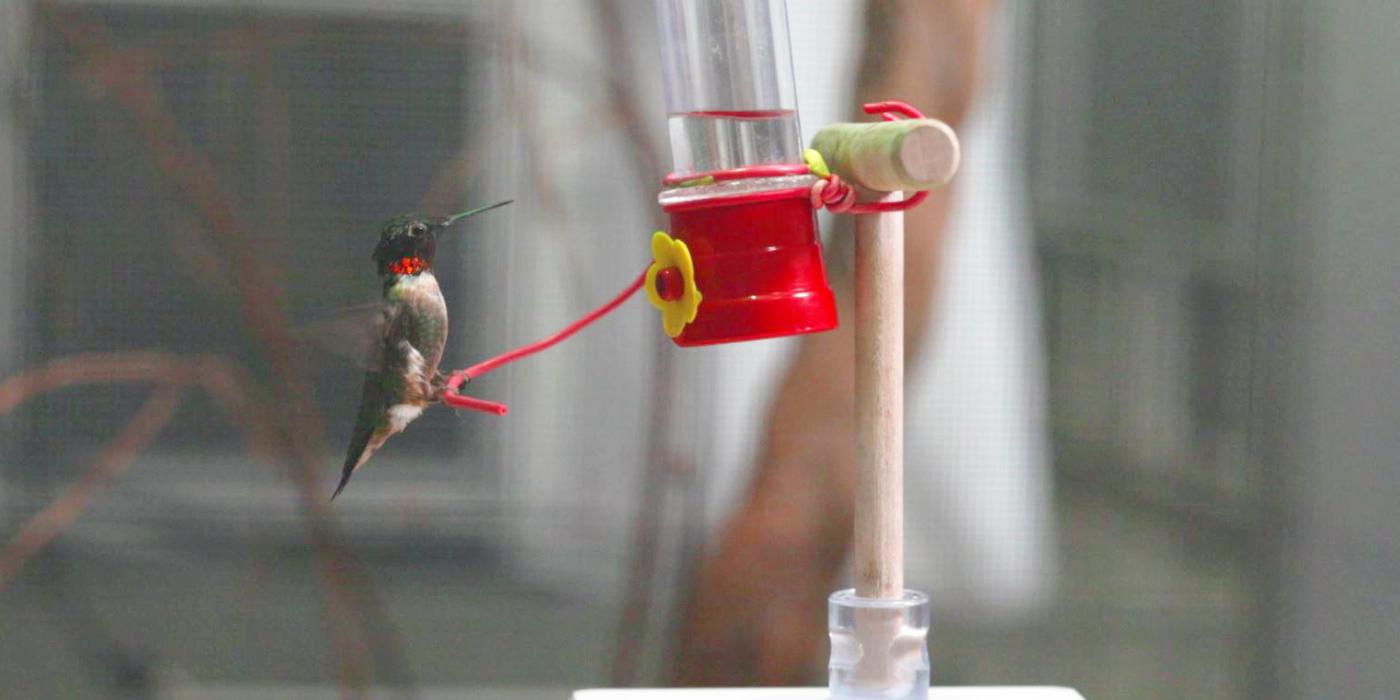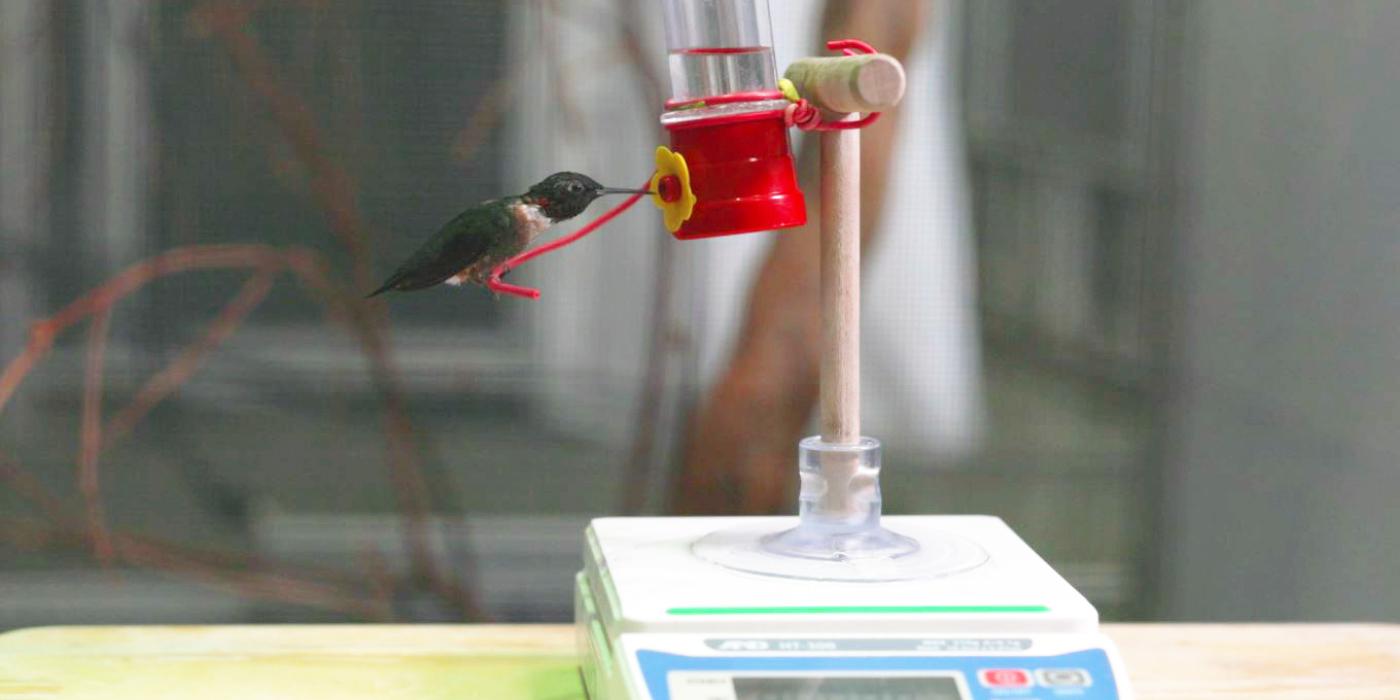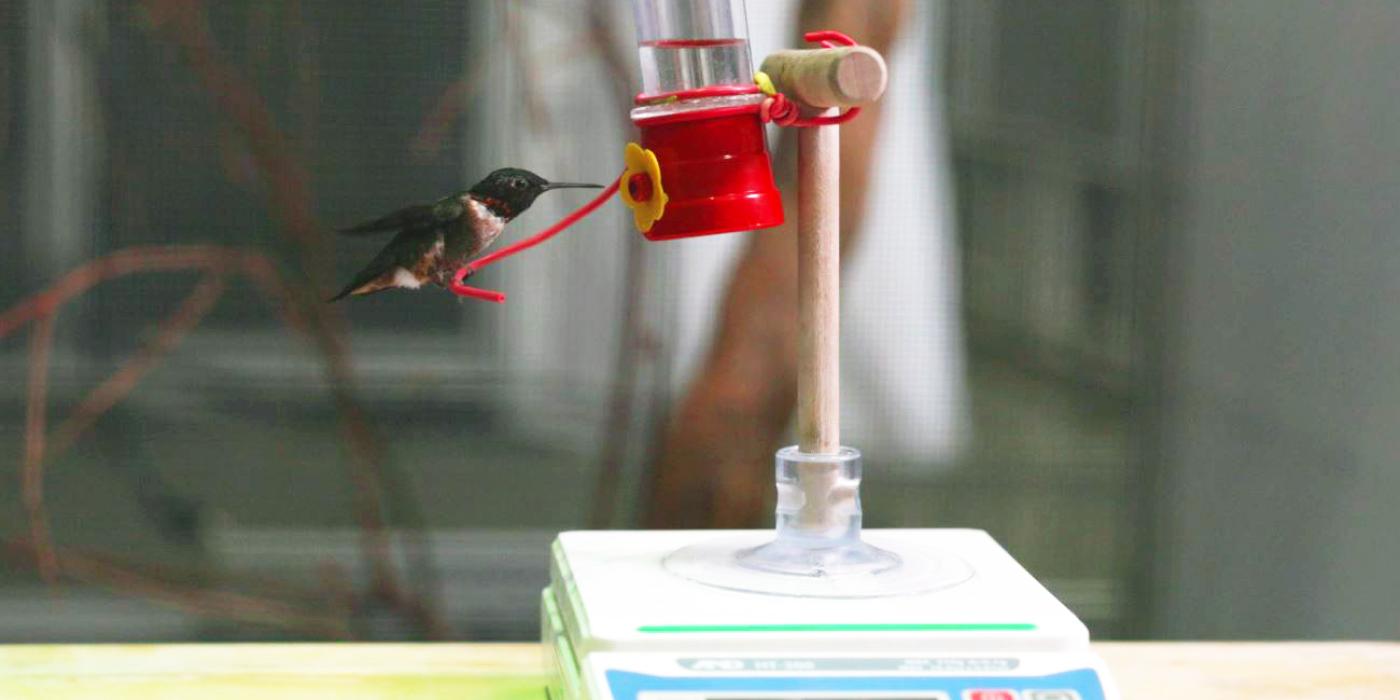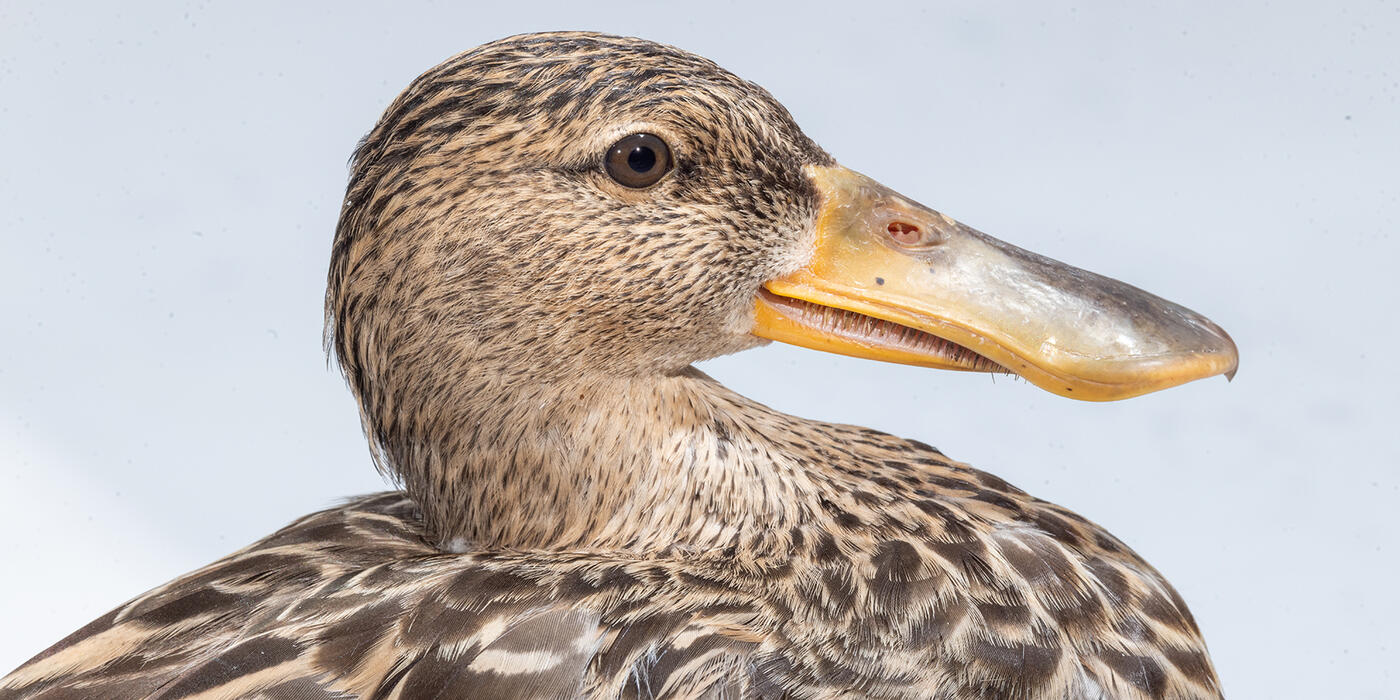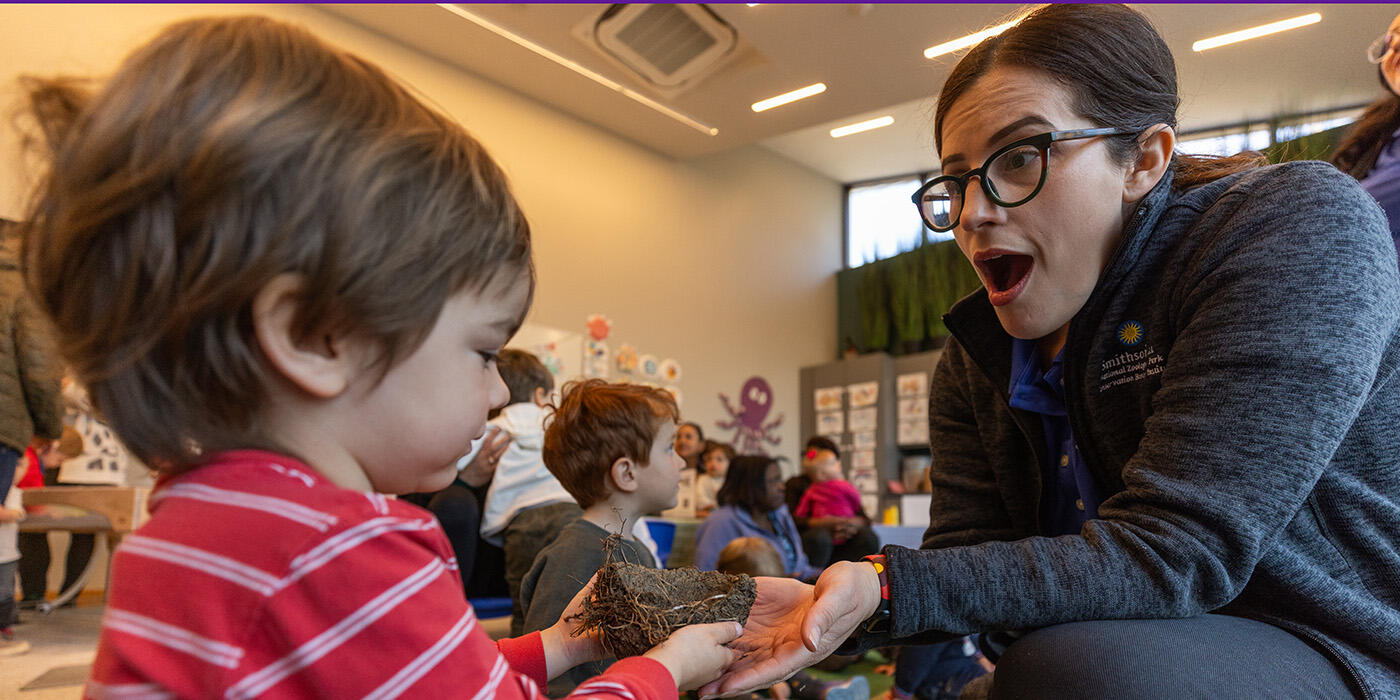How Do You Weigh a Hummingbird?
See Spot.
Spot is a ruby-throated hummingbird who lives at the Smithsonian’s National Zoo in Washington, D.C. But his story began just a short distance away in Virginia. Hummingbirds hatch from eggs the size of a small pea, and when Spot was just a young chick, he fell into a swimming pool and almost drowned.
Luckily, fate was on his side that day; he was scooped out of the water and rushed to a local bird rehabilitator. Due to the injuries Spot sustained from the fall, releasing him back into the wild was not an option. The rehabilitator contacted Bird House curator Sara Hallager and asked if the Zoo would be able to care for Spot. After securing the necessary permits, the team welcomed Spot into the Zoo’s collection in November 2016.
Today, Spot is 5 years old and thriving. For such a small bird, he’s got a lot of personality. Spot is a calm and curious fellow who enjoys sunning himself under the UVB lamp in his enclosure. He is also very perceptive of his keepers and likes to interact with each new item that we add to his habitat.
Curiosity is how Spot came to be scale-trained. Many of our birds participate in positive reinforcement training and voluntarily “station,” or stand still upon a scale, on a keeper’s cue. From there, we record the birds’ measurements and keep track of whether they have gained weight, lost weight or stayed the same. If needed, we can work with the Zoo’s nutritionist, Erin Kendrick, to adjust a bird’s diet to ensure they are in optimal health.
Obtaining our birds’ weights is especially important for migratory species, who appear to be hard-wired to fluctuate in weight to coincide with breeding and migration season. Ruby-throated hummingbirds like Spot breed in North America—east of the Mississippi River—in spring and summer, then fly non-stop over the Gulf of Mexico to their wintering grounds in Central America.
Obtaining voluntary weights on birds takes a lot of patience and a little help from technology. We place part of the birds’ diet on top of scales in their enclosure, then watch via camera as they land, eat their meal and fly away. Most birds just ignore the cameras, but Spot aggressively flew at the device and tried to attack it. It was clear that he did not like having a camera in his enclosure, and we had to come up with a new way to weigh him.
Thankfully, Spot is calm around keepers. Having cared for him for several years, we know that the way to his heart is through sugar water. In the wild, hummingbirds feast on tiny insects (like gnats and aphids), spiders and nectar from flowers. At the Zoo, Spot’s diet consists of a nutritionally complete nectar designed specifically for hummingbirds and other nectar-feeding birds, which we serve in a brown nectar feeder.
To differentiate his normal diet from his training reward, we serve the sugar water in a clear nectar feeder. As soon as Spot sees this special feeder, he knows he’s getting his favorite treat!
We set Spot’s sugar water feeder on a T-stand atop the scale and added a wire at just the right distance where he could sit on the perch without flapping his wings. Hummingbirds beat their wings so rapidly that they can fly forwards, backwards and hover. If you have ever seen a hummingbird feed at a flower, then you know that they hover at just the right distance so that their long tongue can lap up the nectar inside.
Encouraging Spot to land—and sit still—was crucial to getting a good reading on the scale. Now, we can get monthly weights on him. At his last weigh-in, Spot tipped the scales at 3.6 grams—1.4 grams less than a nickel!
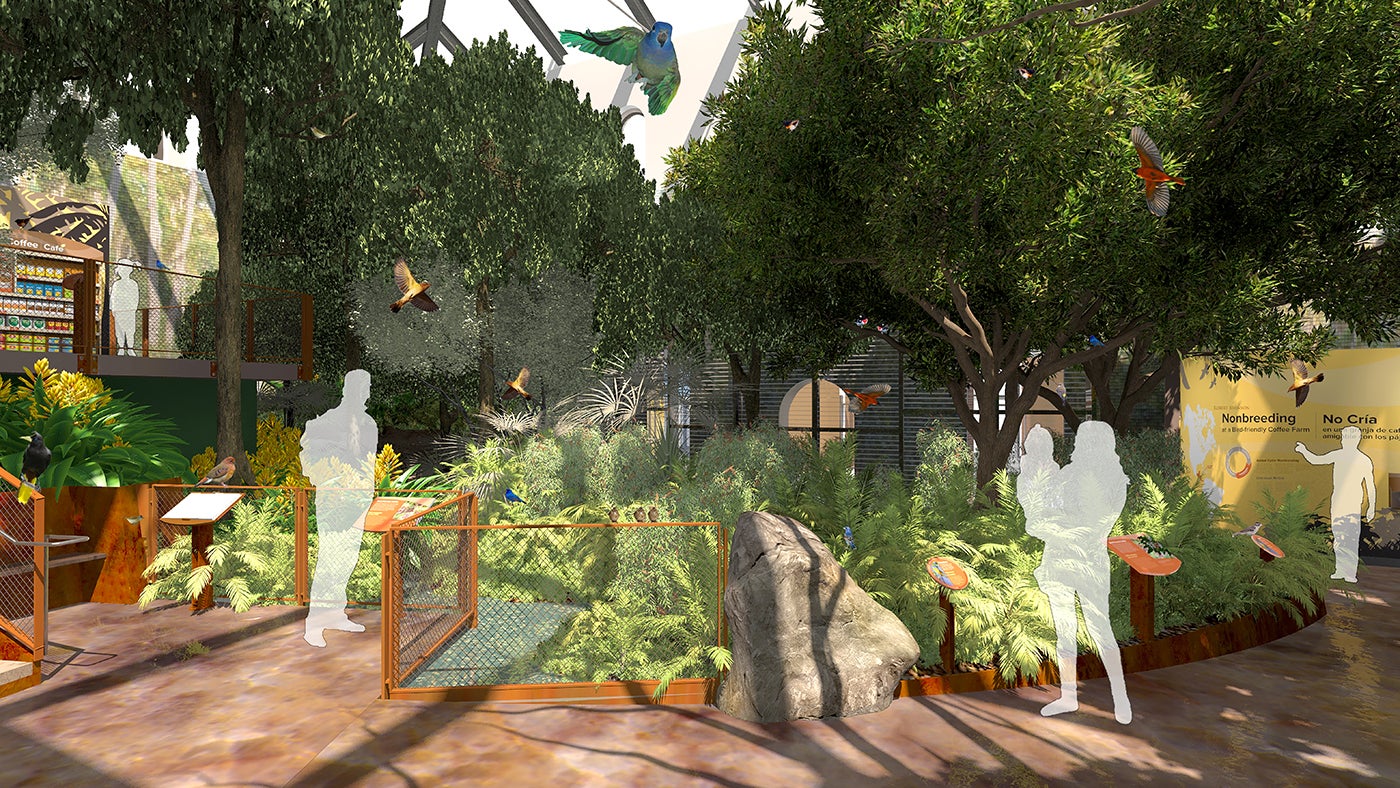
Spot is a sweet, social little hummingbird and a wonderful ambassador for his species. Although he is currently living behind-the-scenes while we put the finishing touches on the Bird House renovation, visitors will be able to see Spot in the Bird Friendly Coffee Farm aviary when the exhibit reopens in late fall 2022!
Currently, Spot is our only ruby-throated hummingbird, but he won’t be flying solo for much longer. We plan to bring in a female companion for him. Visitors will be able to tell the two apart because only males have the ruby red throat that earned the species its name; females’ throat patches are white.
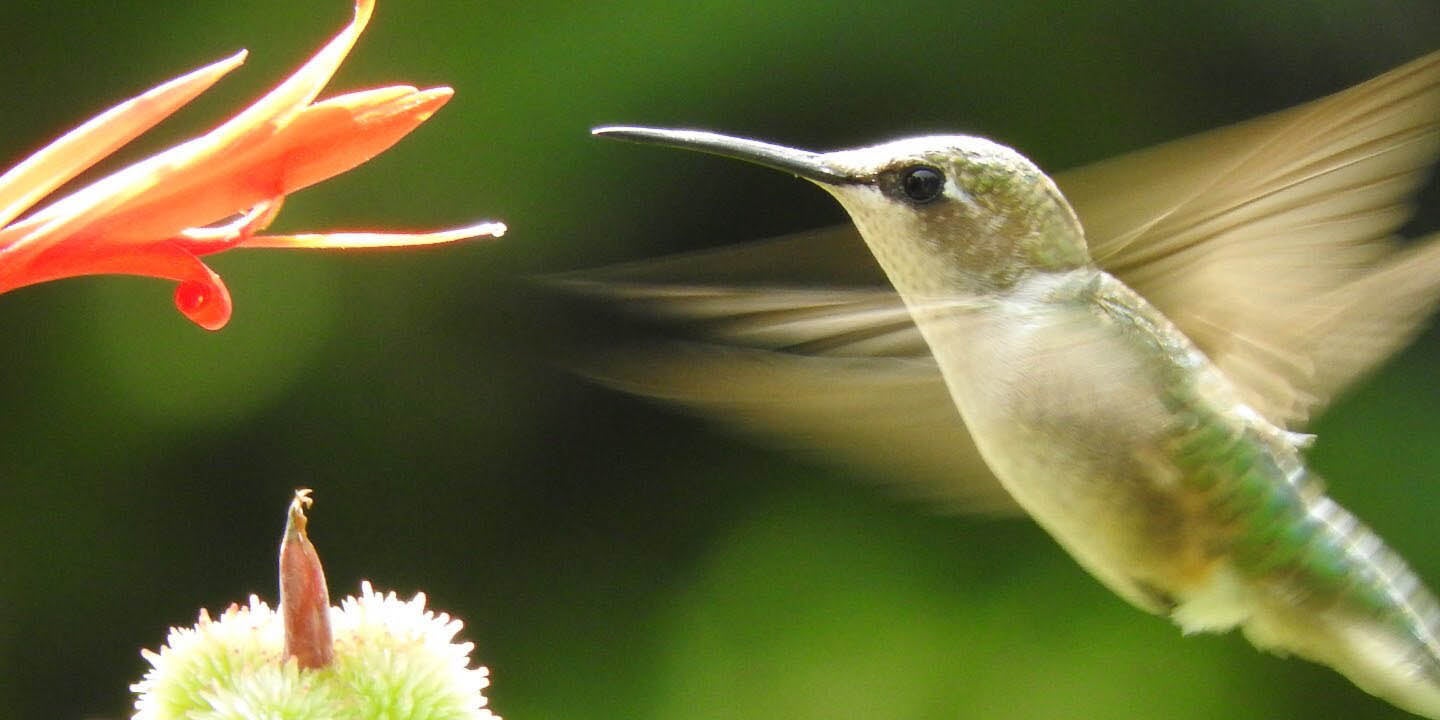
I want to help hummingbirds! What can I do?
Although ruby-throated hummingbirds are considered “least concern” by the International Union of Conservation of Nature, there are some simple actions we can take to help them and other migratory birds in a big way.
If you have a garden or balcony, consider growing native plants that ruby-throated hummingbirds like to eat, such as trumpet honeysuckle, scarlet beebalm and wild bergamot. Check out a full list of their favorite flowers on the U.S. Forest Service’s website.
Another great way to attract hummingbirds is with a sugar water feeder. You can find the hummingbird nectar recipe on the Zoo’s website. (Remember to routinely clean your bird feeders—whether they’re filled with nectar or seeds—to prevent birds from getting sick.)
You can also ensure the area around your home is a safe space for hummingbirds. To help prevent birds from colliding with your windows, add decals to the glass. Free-roaming pet and feral cats also pose a threat to birds, even when well fed. Scientists estimate that 2.4 billion birds are killed by cats every year in the U.S. Keep your cat indoors, and encourage your neighbors to do the same. When researching methods to rid your home of pests, avoid fly traps outside, as ruby-throated hummingbirds can become entangled on the sticky paper.
Last but not least, when the Bird House reopens, take a trip to the Zoo and meet Spot! Meantime, we hope that you will share Spot’s story with your family and friends. We can all do our part and inspire others to care about migratory birds and take action to save them and their habitats.
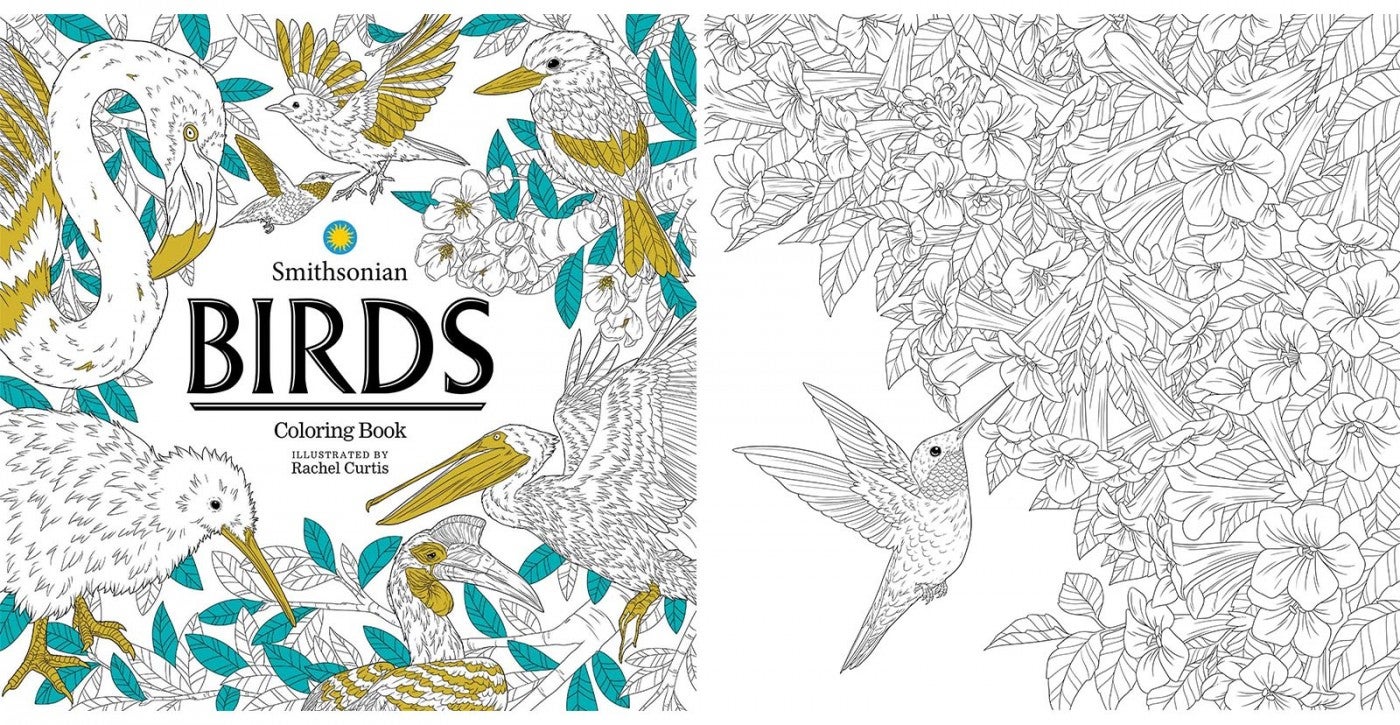
This story appears in the March 2021 issue of National Zoo News.
Fly into the captivating world of our feathered friends in BIRDS: A Smithsonian Coloring Book. Unlock your creativity and bring 38 beautiful birds and their lush habitats to life. Download a free ruby-throated hummingbird coloring sheet! Proceeds from your purchase support animal care and conservation at the Smithsonian's National Zoo and Conservation Biology Institute.
